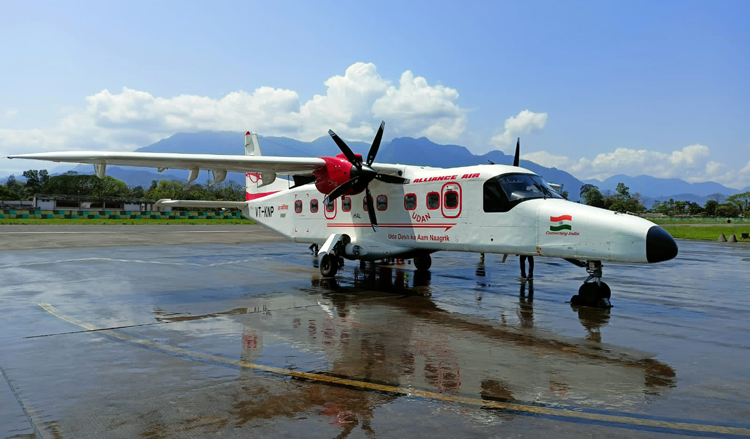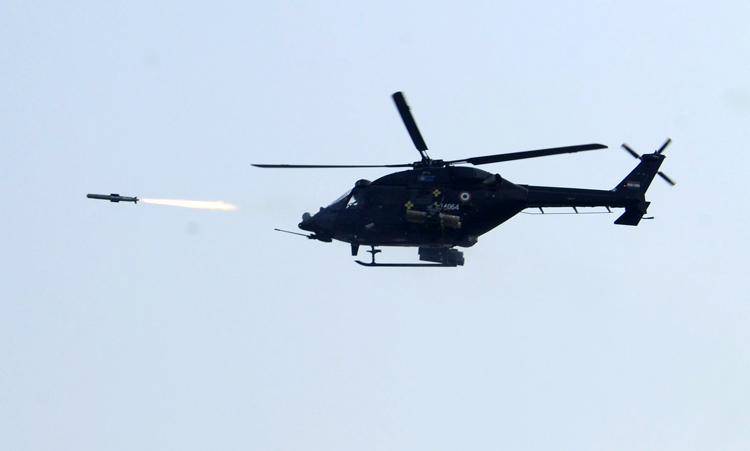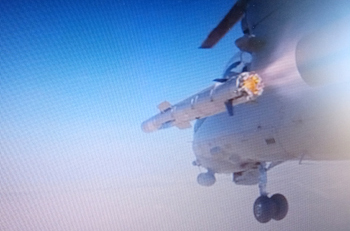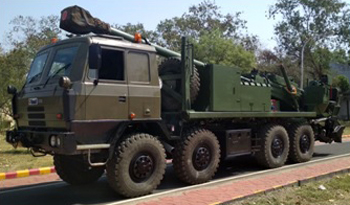INDIAN ARMED FORCES CHIEFS ON OUR RELENTLESS AND FOCUSED PUBLISHING EFFORTS

The insightful articles, inspiring narrations and analytical perspectives presented by the Editorial Team, establish an alluring connect with the reader. My compliments and best wishes to SP Guide Publications.

"Over the past 60 years, the growth of SP Guide Publications has mirrored the rising stature of Indian Navy. Its well-researched and informative magazines on Defence and Aerospace sector have served to shape an educated opinion of our military personnel, policy makers and the public alike. I wish SP's Publication team continued success, fair winds and following seas in all future endeavour!"

Since, its inception in 1964, SP Guide Publications has consistently demonstrated commitment to high-quality journalism in the aerospace and defence sectors, earning a well-deserved reputation as Asia's largest media house in this domain. I wish SP Guide Publications continued success in its pursuit of excellence.
Made in India Advances
Privatisation is the way for India’s defence industry to grow as we have more than enough potential in the private sector
 |
The Author is Former Director General of Information Systems and A Special Forces Veteran, Indian Army |


It is good to see ‘Made in India’ making advances. From March 21 to March 23, 2022, three loitering munitions (two fixed wing variants and one hexacopter) developed by Economic Explosives Ltd in partnership with Bangalore-based start-up Zmotion Autonomous Systems Pvt Ltd were tested successfully in the Nubra Valley of Ladakh at an altitude of over 15,000 feet. The Army Design Bureau rating the performance and safety standards, facilitated the private firm and the start-up for designing and developing the first ever indigenous loitering munitions.
The above man portable munitions can take off with a four kilogram warhead, flying for an hour and homing on to ground-based targets with precision. Such munitions, are not only much cheaper to produce than armed drones but can cause disproportionate damage to conventional targets like ground-based bunkers, command centres, artillery and armoured formations. These indigenous munitions are expected to be at least 40 per cent cheaper than imports from Israel and Poland. Also termed ‘suicide drones’, loitering munitions have wreaked havoc in recent battles against conventional weapon platforms like tanks and missile launchers.
Also termed ‘suicide drones’, loitering munitions have wreaked havoc in recent battles against conventional weapon platforms like tanks and missile launchers
All the three loitering munitions systems achieved their endurance targets during the trials after taking off from high altitude areas. This reconfirms that privatisation is the way for India’s defence industry to grow as we have more than enough potential in the private sector. In the instant case, rapid fielding of these loitering munitions into the Army is the need of the hour, cutting down the red tape. Also, giving the responsibility for production of these loitering munitions to the Defence Research and Development Organisation (DRDO) or a Defence Public Sector Undertaking (DPSU), which is the usual bureaucratic trick, should be strictly avoided.
The Ministry of Defence (MoD) has earmarked 25 per cent of its domestic capital procurement budget amounting to Rupees 21,149 crore for acquisitions from the domestic private industry this year. This is good for a beginning but the percentage of procurement from the domestic private industry should be progressively increased to at least 50 per cent to provide a level playing field.

On April 12, 2022, the first Made-in-India Dornier 228 aircraft of Alliance Air took its first commercial flight on the Dibrugarh-Pasighat route. Alliance Air, the regional division of Air India operating flights under the government's Regional Connectivity Scheme (RCS) called UDAN had recently taken delivery of the passenger variant of Dornier 228 aircraft made by the government-owned Hindustan Aeronautics Limited (HAL) under the license agreement.
Alliance Air has taken delivery of the passenger variant of Dornier 228 aircraft made by the government-owned Hindustan Aeronautics Limited (HAL)
In February 2022, Alliance Air had signed an agreement with the HAL to lease two 17-seater Dornier 228 aircraft. The Dornier 228 is based on Dornier-228 being operated by the Indian Air Force (IAF) and manufactured by HAL in India. Till now, Dornier 228 aircraft were being used by the Armed Forces only. UDAN will boost connectivity and tourism in the northeast.
The MoD announced on April 12, 2022, that a second flight test of anti-tank guided missile ‘Helina’ was successfully completed at a high-altitude range as part of user validation trials. The ministry’s statement said that the first flight test of Helina was successfully conducted on April 11 and that both the tests were done from the ‘Dhruv’ advanced light helicopters (ALH). The statement further said, "Today's trial was carried out for different range and altitude. As per the plan, the missile engaged the simulated tank target accurately. With theflight-test, consistent performance of the complete system, including imaging infra-red seeker, has been established, which will enable the induction of the Helina into the Armed Forces."

Helina has all-weather day and night capability and can defeat battle tanks with conventional armour as well as with explosive reactive armour. The latest test came on the back of a series of trials conducted at the Pokhran firing range in Rajasthan. Helina or helicopter-based Nag missile, can strike targets up to seven km away. The fire-and-forget missile, guided by an infrared imaging seeker system, successfully engaged a simulated tank target at high-altitude ranges. The DRDO, the Indian Air Force (IAF) and the Indian Army (IA) jointly conducted the tests. The Helina guided missile system, has all-weather day and night capability and can knock out enemy tanks with conventional and explosive reactive armour.
The Helina guided missile system, has all-weather day and night capability and can knock out enemy tanks with conventional and explosive reactive armour. Nag and Helina are the existing anti-tank missiles developed by DRDO.


The Helina tests on April 11-12 came four months after India successfully tested the helicopter launched stand-off anti-tank (SANT) missile, which has a range of 10 km. IAF’s Russian-origin Mi-35 attack helicopters are expected to be equipped with the missile to arm them with the capability to destroy enemy tanks from an improved stand-off range. The existing Russian-origin Shturm missile on the Mi-35 can target tanks at a range of five km. Nag and Helina are the existing anti-tank missiles developed by DRDO. The Nag missile is launched from a modified infantry combat vehicle, called the Nag missile carrier or Namica.
A Press Information Bureau (PIB) report of April 13, 2022 states that the Ordnance Factory Board (reconstituted?) and Bharat Earth Movers Ltd. (BEML) have unveiled the 155mm 52 Cal Mounted Gun system, earlier showcased during DefExpo 2018. It is designed and manufactured by OFB in association with BEML and Bharat Electronincs Ltd (BEL). The gun is equipped with the state-of-the-art laying and sighting system like GPS aided INS, muzzle velocity feeder data management, day and night firing, and ballasting computer system capability. The gun has a range of 42 kms and onboard ammunition storage capability of 18 rounds of HE shells as well as 18 BMCS and 2-6 chargers. It can be automatically deployed in any terrain and can perform a mission independently.
The base vehicle used for the gun system is the BEML-TATRA 8X8 truck with all differential lockable and a 300 KW (402 HP) engine, providing power to weight ratio of more than 10KW/tonne. This is high mobility vehicle has a cruising speed of 80 km/hr on road and more than 30 km/hr in cross-country, with1000 km cruising range without refueling. It can also be used for all weather reinforcement for the infantry.





